ECSS Annual Congress 2019

ECSS Prague 2019
24th Annual Congress of the European College of Sport Science (ECSS)
 Czech Republic, Prague, Prague Congress Centre
Czech Republic, Prague, Prague Congress Centre
www.ecss-congress.eu/2019
Video format: MP4 | watch on YouTube
ABOUT THE CONFERENCE
The European College of Sport Science (ECSS) is the leading association of sport scientists in Europe, and its main scientific event is the ECSS Annual Congress. The ECSS was founded in 1995, and the 1st ECSS Congress was held one year after that in Nice, France. Nowadays, the ECSS Congress is the biggest event in sport and exercise science in Europe, and the second biggest in the world, with around 3 000 people participating every year. This year the ECSS Congress was held on 3-6 July 2019 at the Prague Congress Centre in Prague, Czech Republic.
OUR CONTRIBUTION
At this Congress I presented findings from our study on body composition and nutrient intake of elite rhythmic gymnasts from Bulgaria. The participants in this study consists of a unique sample of world-class competitors, bronze medallists from the 2016 Olympic games in Rio, and gold medallists from World Rhythmic Gymnasics Championships. Our presentation was part of the Oral presentations from the official scientific programme at the ECSS Prague 2019. The abstract was published as conference proceedings of the 24th Annual Congress of the ECSS, and together with our presentation are now both available for download on this page. After the Congress, our study was built upon further and the complete findings were published in the International Journal of Sports Science & Coaching, Vol.15(1), 2020.
Body composition and nutrient intake of Olympic and elite rhythmic gymnasts
Oral Presentation

ECSS Prague 2019
24th Annual Congress of the European College of Sport Science
BODY COMPOSITION AND NUTRIENT INTAKE OF OLYMPIC AND ELITE RHYTHMIC GYMNASTS
Stefan Kolimechkov, Silvia Miteva, Iliya Yanev, Lubomir Petrov
National Sports Academy, Sofia, Bulgaria
ABSTRACT
INTRODUCTION:
Special consideration is given to the external appearance of rhythmic gymnasts, and this demands particular adherence to their diet and body composition. The purpose of this study was to assess the body composition and nutrient intake of top-level Olympic and elite rhythmic gymnasts.
METHODS:
Twenty-one elite rhythmic gymnasts from Bulgaria were divided into three groups: FNT (First National Team, 2016 Olympic bronze medallists, n=5, mean age 24.2), SNT (Second National Team, 2017 World silver medallists, n=8, mean age 17.8), and JT (Junior Team, n=8, mean age 12.6). Body fat and muscle mass were estimated by skinfold methods, VO2max was measured, and ethics approval was granted prior to the tests. The dietary intake was assessed by using a food frequency questionnaire, in addition to questionnaires concerning the nutritional behaviour, as well as the weight control management.
RESULTS:
The average height-for-age percentile score in the SNT was 83.0, which was significantly higher than the 50th percentile (PR) of the WHO norms. The average BMI of the FNT was at the lower normal limit (18.5 kg/cm2). The average BMI PR for the SNT and JT were significantly lower than the 50th PR of the WHO norms (‘thinness’, BMI < 15th PR). No significant differences between the measured weight and the target weight were found. The % body fat of the gymnasts was within the norms for athletes. The FNT had significantly higher % muscle mass (44.0%) in comparison with the SNT and JT (40.5% and 37.6%, respectively). The SNT showed the highest VO2max results (52.0 ml/kg/min, p < 0.05) vs the FNT (44.0 ml/kg/min) and the JT (38.6 ml/kg/min). The relative energy intake of the gymnasts did not differ significantly from the guidelines for female gymnasts, whilst the energy contribution of proteins was significantly higher in the SNT and JT (17.6% and 19.4%, respectively) than the recommended 15%. However, there was no significant difference between the relative protein intake between the groups (1.7 g/kg/24h vs 1.7 g/kg/24h vs 1.9 g/kg/24h). The energy contribution of fats was above the recommended norms in the FNT, whilst that in the other groups was within the norms. The relative fat, protein and carbohydrate intakes were within the norms. All of the rhythmic gymnasts followed the desired nutritional habits, and 17 of the 21 competitors indicated a high degree of self-control in relation to their nutritional behaviour. The methods most frequently applied by the gymnasts for weight management included a reduction of carbohydrates, fats and salt, use of sauna facilities, and additional aerobic activities.
CONCLUSION:
The BMI and % body fat of all gymnasts were considerably low, but within the reported values for elite gymnasts. Olympic and elite rhythmic gymnasts maintain their target weight, while they are keeping their % body fat and nutrient intake at the lower normal limits.
Presenting Author: Dr Stefan Kolimechkov
Date & time: 5 July 2019, 4:45 pm
Oral Presentations, Prague Congress Centre, South Hall 1B
Chairs: Prof. David Rowlands PhD & Assoc. Prof. Patricia Doyle-Baker Dr PH/PhD
Session-ID: OP-PM45 Nutrition: Protein and Dietary Regimens
Abstract-ID: 1081
GALLERY, ECSS Prague 2019

I am delighted to have been one of the winners at the 3rd ECSS SportEx Raffle during the Congress.

This is the Prague Congress Centre, the official venue of the ECSS Congress 2019.

Number of participants at the ECSS Congress since 1996.

Future Congresses of the ECSS.

Poster Session at the European College of Sport Science Congress in Prague 2019.

Sportex Raffle Game ECSS 2019.
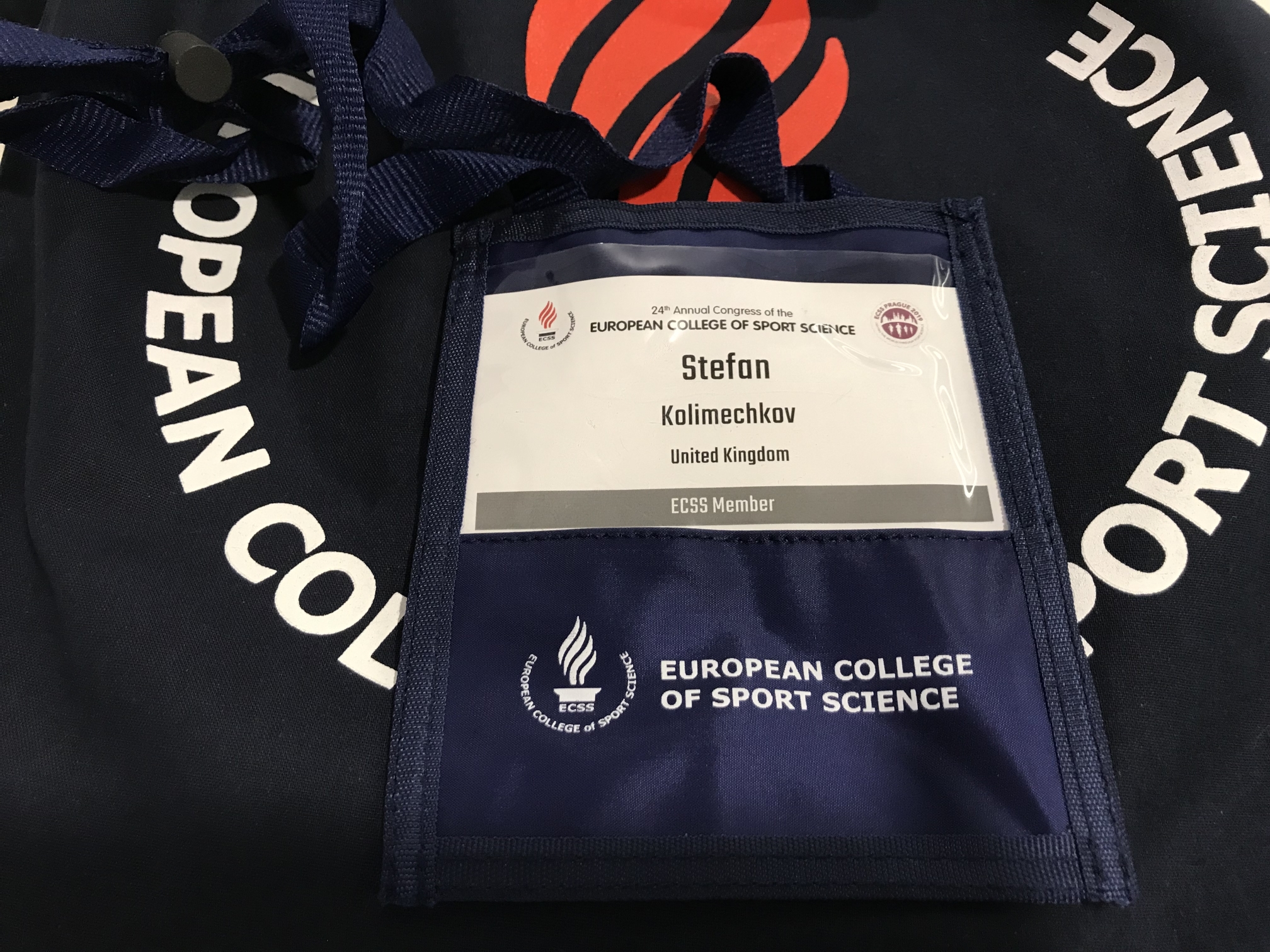
My ECSS Badge in Prague 2019.

Presenting our study entitled Body composition and nutrition of elite rhythmic gymnastics at the ECSS Congress 2019.
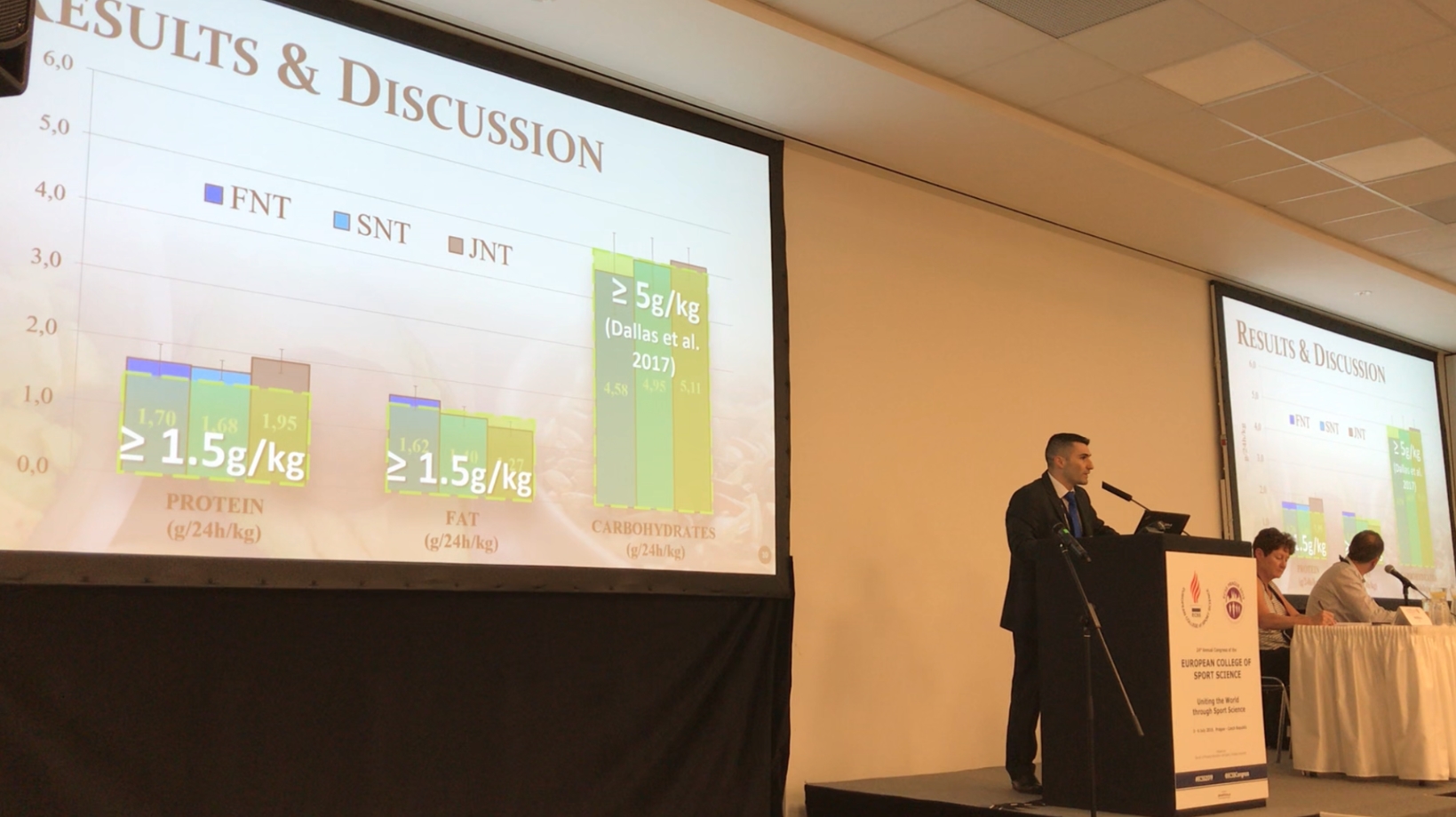
My Presentation in Prague, 2019.

Answering the Q & A section of my presentation. I presented at the following session: 'Nutrition: Protein and Dietary Regimens' at the ECSS Congress 2019.

Performing Y-Balance on the AMTI force and motion platforms at the ECSS 2019.

Performing a Handstand on the AMTI force and motion platforms at the ECSS 2019.
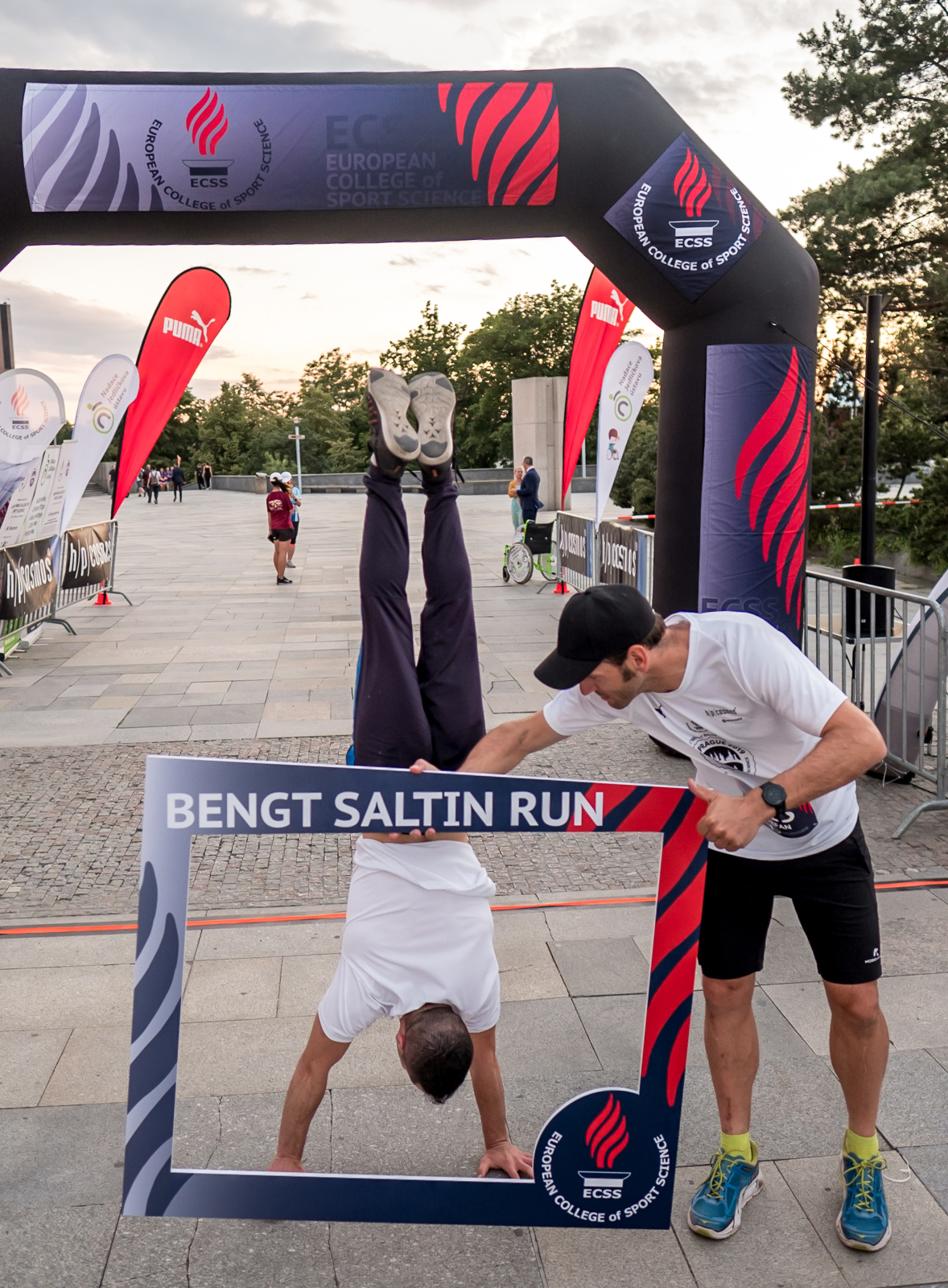
Here I am after completing the Bengt Saltin Run at the ECSS Congress.

Here I am performing the Straddle planche on the AMTI force and motion platforms at the ECSS 2019.

The Cyclus 2 Eccentric Cycling Machine at the ECSS 2019.

Hands on the Biopac Dynamometers at the ECSS Congress 2019.

At the Parallel Sessions learning about Neurodoping at the ECSS Congress 2019.

Implementation of Exercise and Cancer Guidelines at the ECSS 2019.
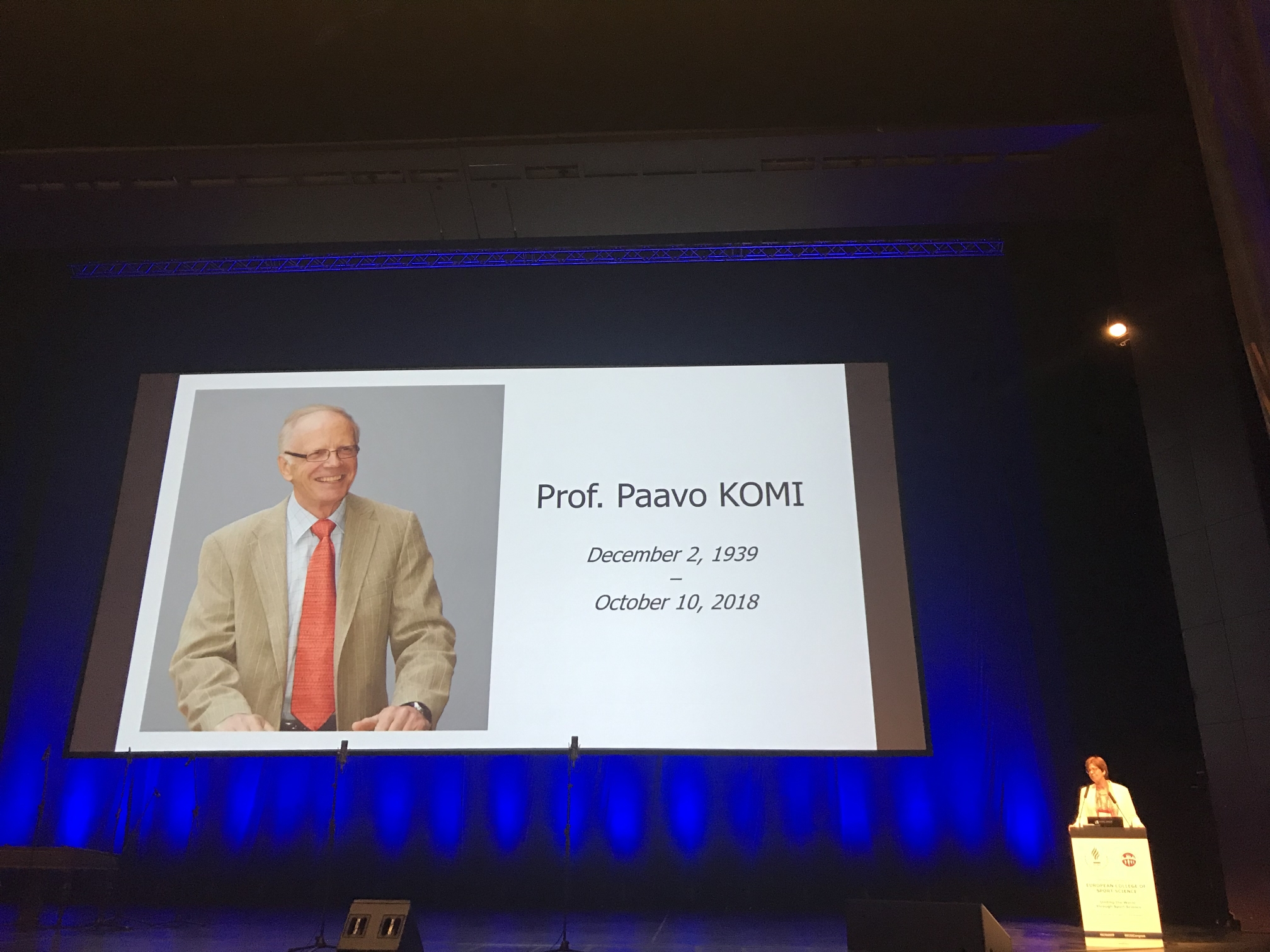
In the memory of Prof. Paavo Komi at the ECSS Congress.

At the ECSS Bengt Saltin Run 2019.

ECSS Bengt Saltin Run 2019 in Prague.
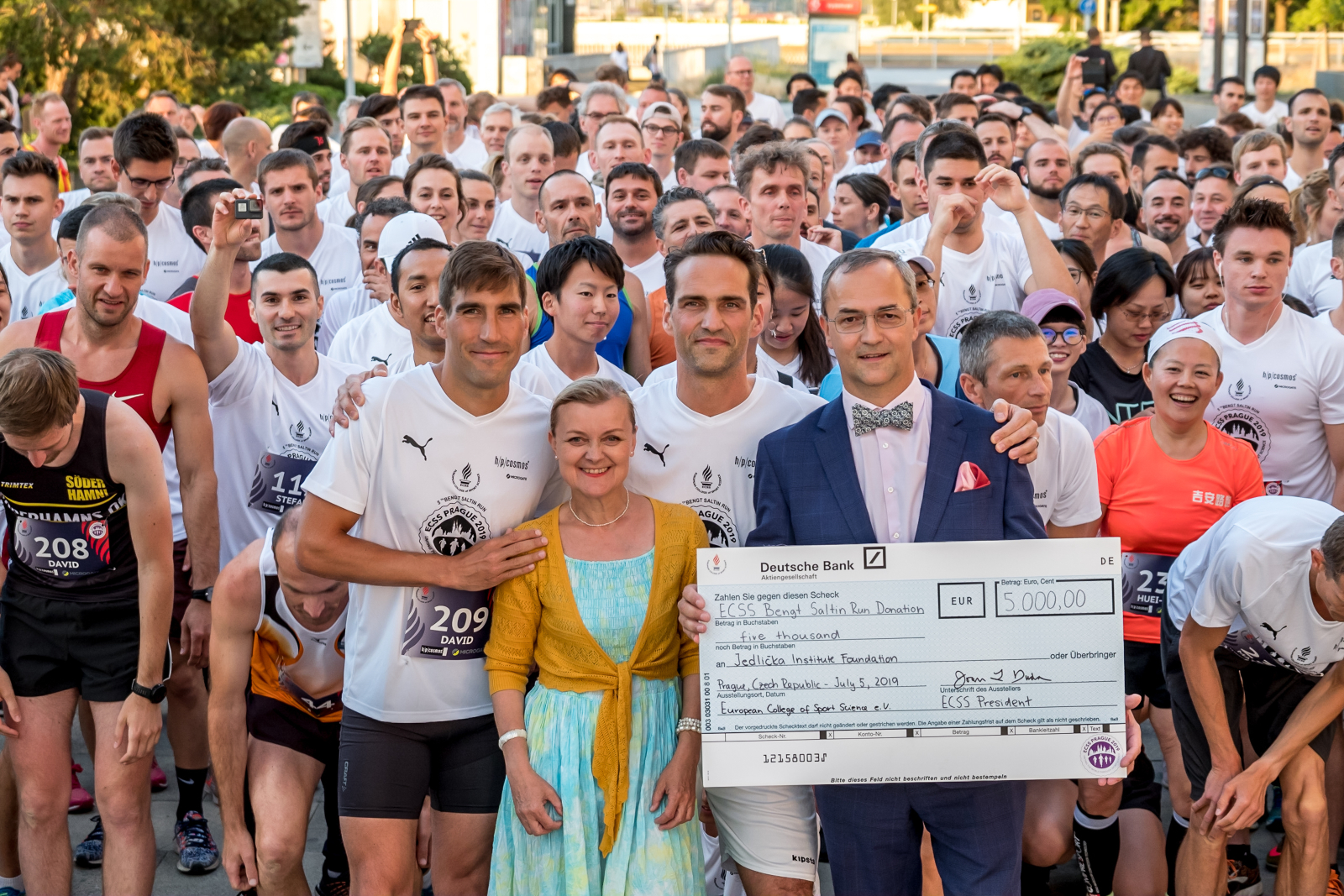
We donated 5,000 EUR at the Bengt Saltin Run at the ECSS Prague 2019.

Here I am on the right with David Svoboda (on the left) who led the warm-up for the ECSS Bengt Saltin Run 2019.

5th ECSS Bengt Saltin Run in Prague 2019.

Cooling down on split after the ECSS Bengt Saltin Run. Cheers!
In Summary
On 5th July 2019, I presented our study on body composition and nutrient intake of Olympic and elite rhythmic gymnasts in front of around 30 sport and exercise scientists at the parallel sessions of the 24th Annual Congress of the ECSS in Prague. I received a positive feedback from both Chairs (Prof. Rowlands & Assoc. Prof. Doyle-Baker), as well as other delegates. This was the biggest conference I have ever taken part in, with 2703 participants from around the world, joining together for the biggest European event in sport and exercise science, ECSS Prague 2019, at the Prague Congress Centre. I am delighted to have been one of the winners at the 3rd ECSS SportEx Raffle during the Congress, where I won the Kubios HRV Premium Software. I also took part in the 5th ECSS Bengt Saltin Charity Run, which was part of the wonderful programme at the ECSS 2019. I listened to one of the top scientists presenting cutting edge research, made new friends, and had one of the best experiences in my life. Thank you ECSS, and I am looking forward to seeing you next year.
How to cite this study:
After the 24th ECSS Congress in Prague, our study was built upon further and the complete findings were published in the International Journal of Sports Science & Coaching, Vol.15(1), 2020, so you can cite the article in this journal as follows:
Miteva, S., Yanev, I., Kolimechkov, S., Petrov, L., Mladenov, L., Georgieva, V., & Somlev, P. (2020). Nutrition and body composition of elite rhythmic gymnasts from Bulgaria. International Journal of Sports Science & Coaching, 15(1), 108–116. https://doi.org/10.1177/1747954119892803

